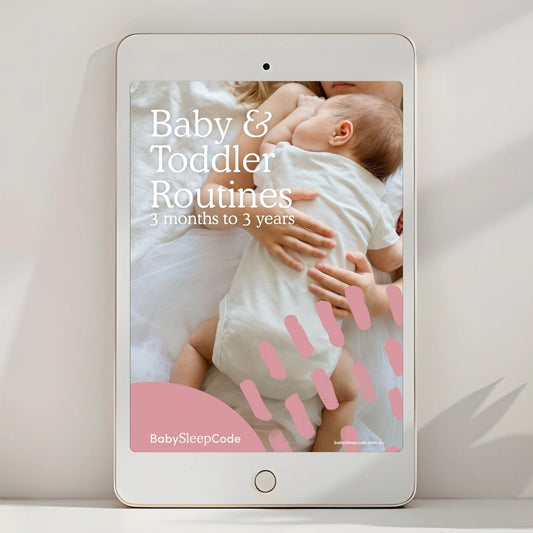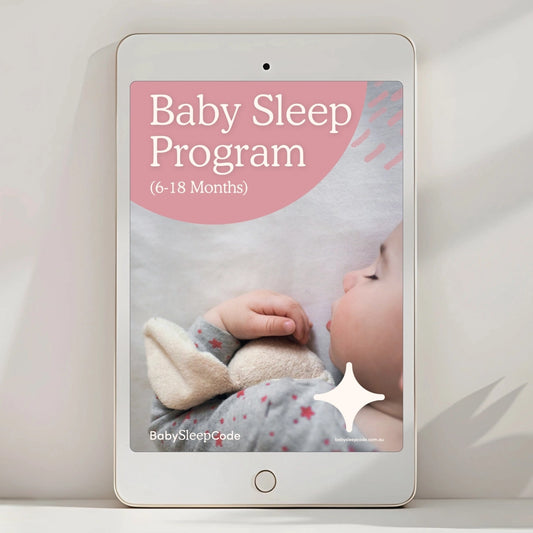Why does my newborn baby cry a lot?
Crying is part of normal infant behaviour. However, up to 20% of infants cry excessively [1]. Previously Colic was diagnosed when an infant would: cry for at least three hours per day for at least three days per week, and for at least for three weeks in a row [2]. But, this definition isn't that useful for parents as many perceive any amount of frequent crying as stressful and hard to manage.
But of those babies diagnosed with colic or excessive crying, only 5% will a medical cause be found. Sometimes it can be completely random and you’re not doing anything wrong! Newborn babies find the adjustment to the outside world a little overwhelming at times. Everything is new and almost nothing is within their control, even their crying can make them more upset.
So it can be helpful to understand different ways to help soothe and calm your colicky baby during fussy periods.
How can I calm my crying newborn baby?
Here are seven different ways that will help you to calm your upset newborn. Try a few different methods together at once for the ultimate soothing effect.
Shushing - let out a long consistent Shhhhhhh near their ear, and gradually increase the volume to match their cry. The shush sound is a powerful switch to help a baby soothe, as it helps to draw their attention away from their own crying. Other loud rumbling noises can help as well if you’re out of breath! Try the kitchen fan, vacuum cleaner, or running the shower.
Side-Cradle Position - Dr Harvey Karp found that holding a baby on their side or tummy can help to initiate a womb-like feeling in their inner ear and can immediately help to calm an upset baby. Try holding them with their side or tummy resting on your forearm, and their head supported turned to the side facing away from you. (The back is the only safe position for sleep).
Dim the lights, and turn off any screens - young babies find the dark soothing, so move to a dim lit space for a little while to help them reset. Also keep tv’s off in the evening as it blocks the production of melatonin (a sleep hormone) and the flashing lights can be incredibly overstimulating.
Movement - after 9 months of constant jiggling in the womb young babies can find stillness alarming. Gentle swinging or bouncing can be a great way to help settle a baby. Try small little movements no more than one to two inches side to side. You want their head to jiggle softly and more than their body. It’s important to be gentle, support their head and neck so there’s never any whipping motion and that you never shake a baby.
Swaddle - Newborns don’t have control over their arms and often when they’re crying their arms will flail around which can make them even more upset. Swaddling them keeps their arms in tight stopping them from startling themself, and mimics the snugness of being inside the womb. Our top pick for swaddling is the Miracle Blanket – a wonderfully soft and stretchy swaddle designed with an ingenious inner wrap that ensures your little one's arms stay comfortably snug.
Sucking - The sucking reflex begins to develop in the womb and is why you might have caught a glimpse of your baby sucking a finger in an ultrasound. Paired with the rooting reflex, they're essential for survival. But this sucking reflex also is proven to have an analgesic effect. And studies show it can reduce a baby's heart rate, blood pressure and stress levels. But overfeeding can lead to tummy discomfort, so offer a clean pink or dummy instead when they’re not due a feed.
Fresh Air - parents often assume that their babies are constantly overstimulated and in fear of bringing on a fussy period will stay home all hours of the day. But the truth is, babies do actually need their days filled with sensory rich experiences. A baby needs and craves sensory and vestibular input from an early age, and ensuring they have adequate time each day receiving it, helps to regulate their mood and sleep patterns. The next time your baby is showing fussy signs, try a change of scenery by moving to a different room or head outdoors into the fresh air.
For more helpful tips, grab my newborn sleep guide - a comprehensive guide for surviving the first 14 weeks!
References:
1. Lucassen PLBJ. Systematic review of the occurrence of infantile colic in the community. Arch Dis Child. 2001;84: 398–403. 10.1136/adc.84.5.398
2. Wessel MA, Cobb JC, Jackson EB, Harris GS, Detwiler AC. Paroxysmal fussing in infancy, sometimes called colic. Pediatrics. 1954;14: 421–435.

















